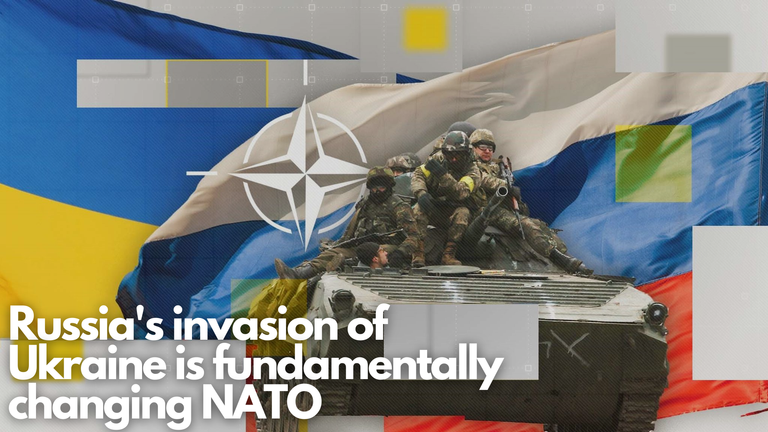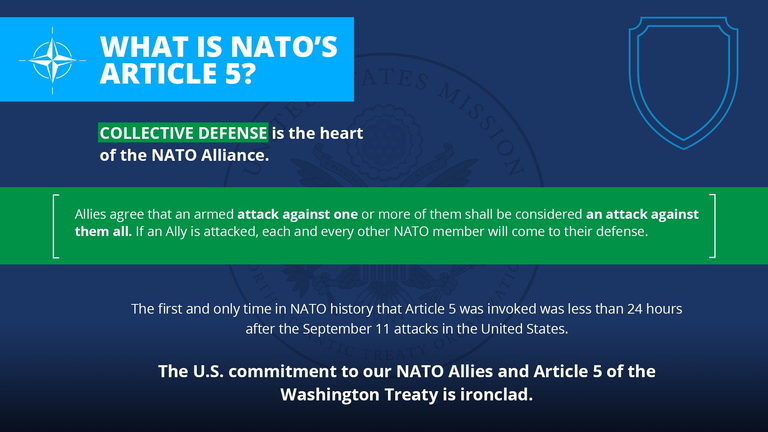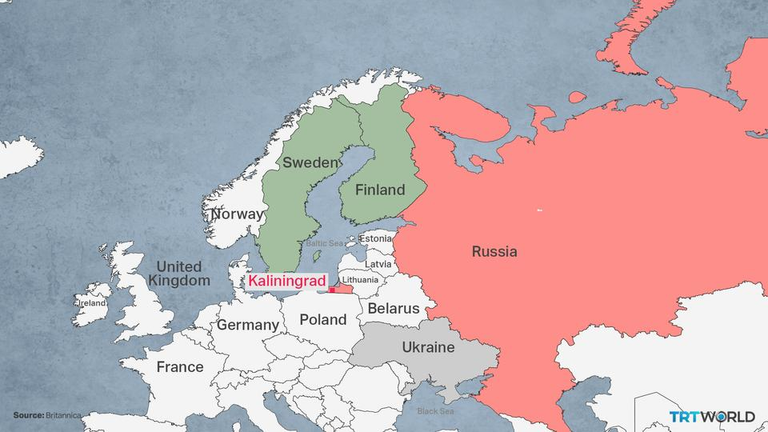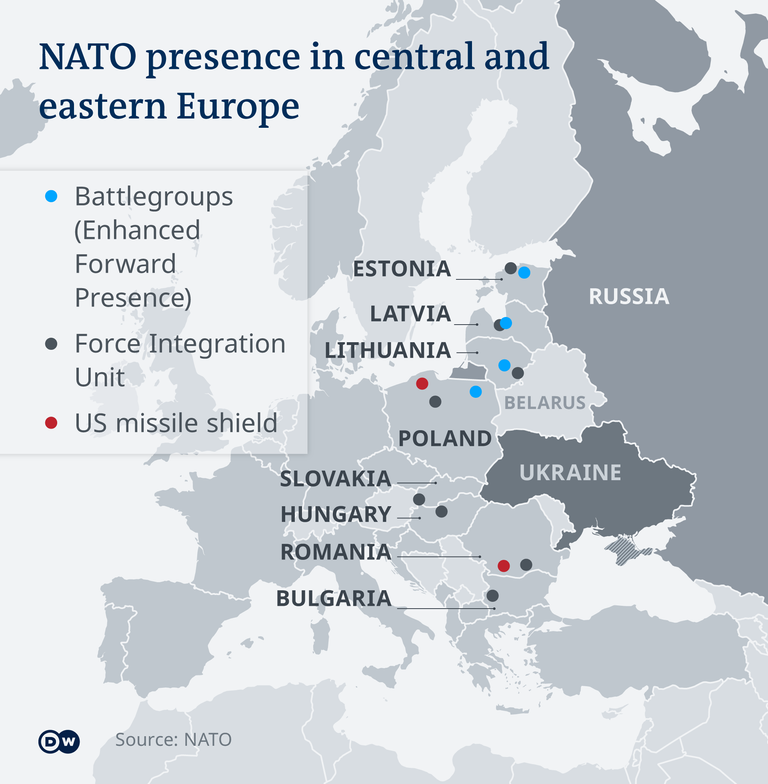
As you've probably already noticed, Putin's invasion of Ukraine has brought NATO out of the shadows. The transatlantic alliance that Emmanuel Macron described as brain-dead in 2019 looks more relevant than at any time in the last 30 years, and a number of European countries have begun to consider membership. So in this article we're going to be taking a look at how NATO might change in reaction to the war in Ukraine, not just in its membership but also in its deployment.
The most obvious change in NATO will be its membership. Both Sweden and Finland are considering joining recent polling has found that an all-time high of 57 percent of swedes and 68 percent of Finns support NATO recession and Scandinavian media have reported that both countries are planning to apply for membership simultaneously sometime in the next few weeks. As expected, this did not please Putin much, and Russia tried to keep both countries from joining. In February Russia's foreign ministry spokesperson warned of a quote military and political consequence if the countries joined the bloc and in April Kremlin spokesperson Dmitry Peskov warned that if Sweden or Finland joined NATO Russia would have to quote rebalance the situation, possibly by deploying nuclear weapons in the Kaliningrad Oblast.

A few weeks ago, a Russian military plane briefly entered Sweden's airspace in what was perceived as an unsubtle warning to the country against NATO membership. Nonetheless, this hasn't deterred either Finland or Sweden, not least because Russia probably already has nukes in Kaliningrad. Sweden and Finland's secession prospects have already improved over the last few days. On Tuesday Olaf Scholz stressed that Germany would protect both countries even if they weren't in NATO, and on Wednesday UK defense secretary Ben Wallis said it was quoted inconceivable that the UK wouldn't defend Finland or Sweden in the event of invasion. On the same day, Sweden's foreign minister announced that Sweden had received security guarantees from the US if it applied for NATO membership. These security guarantees, even if they are not an ironclad card like NATO Article 5, will guarantee Sweden and Finland some measure of security while their applications to NATO are being considered.
Now it should be said that the entry of Finland and Sweden into NATO is not a foregone conclusion. Sweden's ruling Social Democratic Party, which has traditionally opposed NATO membership, is divided on the issue, and the Croatian president recently announced he would veto their recession if he could. However, for now, their possible recession looks more likely than not, and this will be the first major change in NATO since Ukraine. They're not the only countries who could join NATO, though clearly rattled by Russia's newfound belligerents on Wednesday Georgia's president urged a quote quicker and sure path to NATO recession, although NATO looks unlikely to accept a member with an ongoing border conflict with Russia in the near future.

Anyway, that's the first big post-ukraine change to NATO its membership, but the war in Ukraine has also caused another big, perhaps less obvious change in NATO in its deployment. Over the last two months, NATO has rapidly deployed troops on its eastern border. At the end of last year NATO had less than 5,000 troops on its eastern border spread evenly across Estonia Latvia Lithuania and Poland. Today that number is near a 40,000 deployments in all of these countries have been significantly augmented, especially in Poland where NATO now has over ten thousand troops and troops have been deployed in Slovakia Hungary Romania and Bulgaria. Including national armies, this means that NATO has some 330,000 troops on its eastern border with some 130 aircraft on high alert and around 150 warships patrolling the seas. This already massive number will rise to above 350,000 in the next few weeks as over 20,000 NATO and joint expeditionary force troops including 8,000 British soldiers perform expanded joint exercises, the largest of their kind since the Cold War.
For context, pre-invasion the Russian army was estimated to have around 600,000 personnel in total. About 300,000 military personnel are stationed in the Western Military District of Russia, which covers territories bordering Finland, the Baltic States, Belarus and Ukraine. Obviously, this massive troop buildup is in response to Putin's war in Ukraine. Pre-invasion at, NATO had five response plans drawn up in anticipation of an invasion. When NATO leaders met for a virtual summit on February 25th a day after the invasion began they agreed on triggering all five of NATO's response plans leading to this massive troop build-up. The rationale here, at least according to NATO's joint command, is that more troops on the eastern border should better deter Putin from expanding his invasion into one of Ukraine's NATO neighbors like Poland or the antics. Now this is probably true for the moment the Russian army currently looks very unlikely to start a war with a beefed up NATO, especially given that it's already struggling in Ukraine.

Nonetheless, even if it's a justified response to Putin's aggression in Ukraine, NATO's troop buildup on its eastern front will raise tensions in Moscow at a time when neither side enjoys the safeguards of the Cold War. Both the INF treaty which banned cruise missiles with a range of 500 to 5,500 kilometers and the open skies agreement which allowed Russia and NATO members to conduct reconnaissance flight over the other's military sites have been torn up and Russia's invasion of Ukraine has implicitly rubbished the 1997 NATO-Russia founding act which required both sides to avoid new deployments on their borders. Russia's chief of the general staff has also apparently rebuffed attempts by the chair of NATO's military committee to set up communication channels.
To be clear we're not suggesting that NATO should wind down its operations on its eastern flank, we're just pointing out that NATO today has more manpower than ever on its eastern flank without any of the Cold War safeguards and this should worry well anyone who doesn't want a war between Russia and NATO. So that's how Ukraine has changed NATO it's encouraged other countries like Sweden and Finland to join the alliance and triggered the most impressive troop build-up on nato's eastern flank in 30 years.